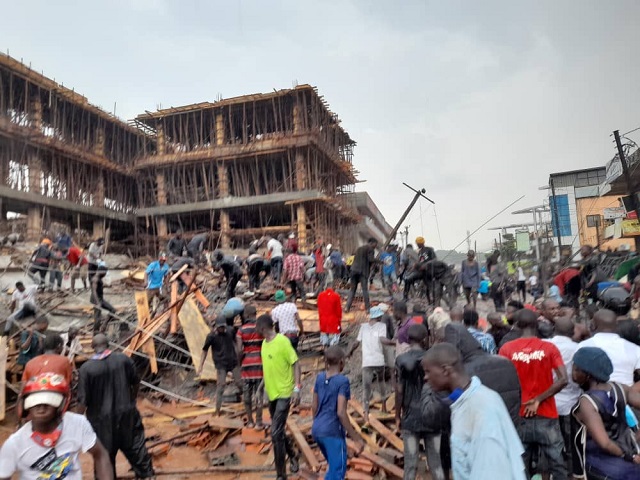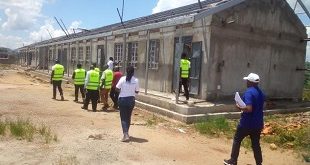
Kampala, Uganda | THE INDEPENDENT | The National Building Review Board is investigating circumstances under which the developer of the Kisenyi collapsed building continued with construction of an illegal structure without Kampala Capital City Authority-KCCA taking action.
The building collapsed on Sunday, killing seven people and injuring six, according to reports by the rescue team.
KCCA says the constructor didn’t have a building permit and approved plans from the Authority. They say when they learnt about an illegal structure being erected, they issued a removal noticed on 30th June 2021 instructing the developer to stop construction. On 29th July 2021, KCCA also issued an enforcement notice but the developer ignored both notices and continued construction.
Now, the manager in-charge of investigations at the Review Board Eng Nicholas Omoding says that they are investigating why KCCA didn’t enforce their notices to make sure that the developer complied with the order to halt construction.
He says that after issuing the June 30th notice instructing the developer to remove the building, it’s expected that KCCA would monitor to ensure compliance.
Among the functions of the National Building Review Board as laid out in the Building Control Act of 2013 is to monitor building development and to oversee, inspect and monitor the operations of building committees.
On Monday 6th, the Board Secretariat visited the scene to start investigations. They talked to eye witnesses, made observations and also obtained samples of construction materials to be tested in a laboratory to ascertain their quality.
According to Eng. Omoding, preliminary investigations have shown that the construction materials were of poor quality with the constructor using less cement than required to mix in sand.
He also adds that the people who were engaged in the construction were not qualified for the job and that no professional personnel like a certified Engineer or architect was consulted.
Eng. Omoding further notes the building was constructed at a fast rate which didn’t permit the materials to gain strength. KCCA says by 29th July, the building was only two levels and that the third and fourth floor were all constructed in August.
Eng Omoding says concrete needs an allowance of at least 28 days to gain strength before adding another layer.
According to the World Bank Investment Climate Report 2013, it is estimated that 60-80 percent of buildings in developing countries are not subjected to building control.
The Kisenyi building joins a list of structures in Kampala that have collapsed during construction since May 2020. Others buildings include one in Kitebi that killed one person, one in Nansana which killed the owner and the two buildings that collapsed in Makindye.
The Executive Secretary of the National Building Review Board Eng. Flavia Bwire says they see a pattern of three major issues in all these events. All buildings were constructed without a permit from the city authority, lacked supervision by qualified personnel and used poor quality building materials.
Eng Bwiire says that eye witness accounts indicate that the building started collapsing from the top where they were casting concrete. Others say a truck knocked one of the corners of the building causing the collapse, but this she says raises questions on the strength of the structure. Eng Bwiire says the remaining portion of the building has cracks and hence possess risk to life.
Recently in June 2021, the Contractor magazine published by the Uganda Association of Building and Civil Engineering Contractors-UNABCEC carried a pertinent article by Allan Mugisha, the Program Director of SREIDS East Africa, a school of Real Estate and Infrastructure Development Sciences, who attributed the collapsing of buildings partly to corruption saying that in Uganda, bribery for approval of plans seems to have been formalized as some sort of practical private partnership.
“With a widened problem scenario like this, collapsing buildings are not an isolated problem but are part of a larger manifestation of a generally poorly managed urban development control agenda in spite of the strong legal framework” wrote Mugisha.
He further noted that there is low compliance with building standards, poor cross-linkages of urban land delivery actors, reactive urban infrastructure delivery and apparent absence of a desired urban landscape or townscape.
******
URN
 The Independent Uganda: You get the Truth we Pay the Price
The Independent Uganda: You get the Truth we Pay the Price


